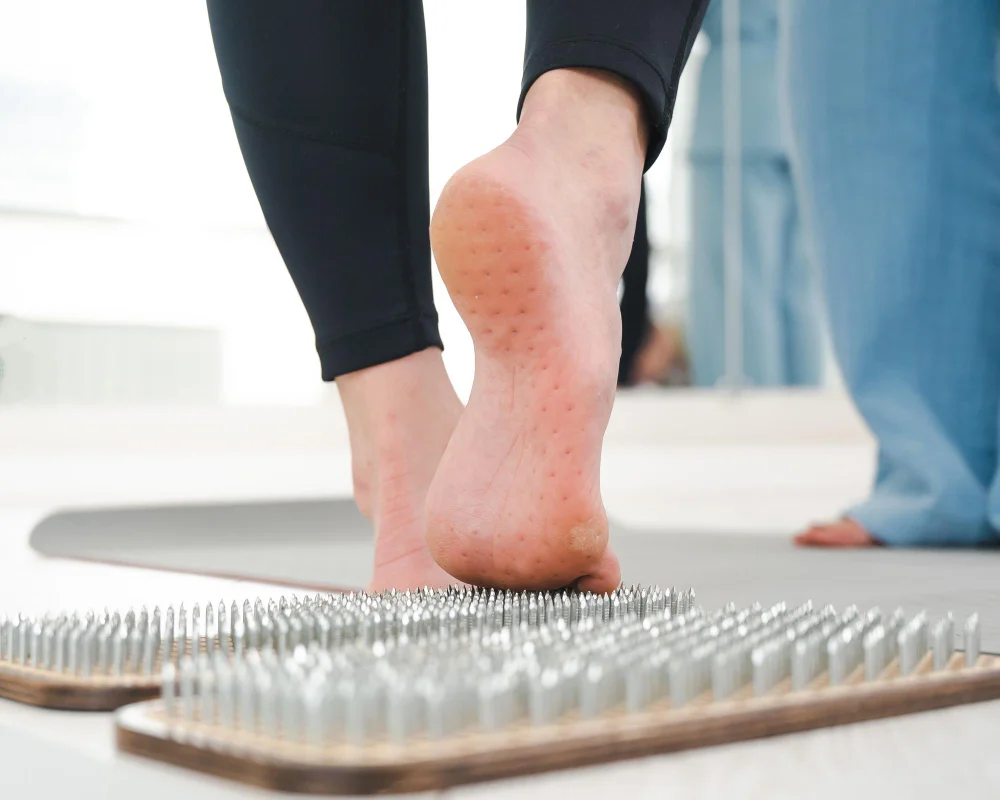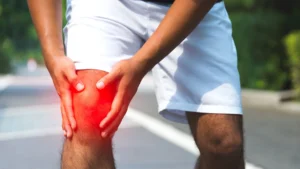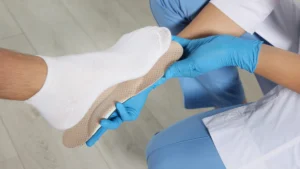Just as your body sends signals about your overall health, your feet provide important clues about your well-being. By paying attention to common symptoms such as pain, swelling, or changes in skin color, you can gain valuable insights into potential underlying conditions. This guide will help you understand what your feet are telling you, empowering you to take proactive steps towards better foot health and overall wellness.
Decoding Pain: What Sharp Discomfort Means
Sharp pain in your feet often signals a problem that requires attention. While discomfort can arise from simple causes like ill-fitting shoes, persistent or intense pain can indicate underlying issues such as tendonitis, fractures, or nerve damage. Understanding the type and location of your pain is vital. Listening to your body’s signals will guide you toward appropriate treatments or lifestyle adjustments.
Foot Arch Pain: Signs of Overuse or Injury
Foot arch pain typically results from overuse, improper footwear, or injuries. You may notice discomfort during prolonged standing or walking, signaling strain or inflammation in the tendons. Conditions like plantar fasciitis can exacerbate this sensation, leading to a sharp pain when you first step out of bed.
Heel Pain: Potential Red Flags for Underlying Conditions
Heel pain might indicate conditions such as plantar fasciitis, Achilles tendinitis, or even stress fractures. These issues often arise from repetitive strain or biomechanical anomalies. The pain may worsen with increased activity or after periods of rest, highlighting the importance of addressing the discomfort early to prevent further complications.
Heel pain can manifest as a sharp, piercing sensation, particularly with the initial steps of the day. This might signal plantar fasciitis, characterized by inflammation of the tissue connecting your heel to your toes. Achilles tendinitis, resulting from overuse or tight calf muscles, could also contribute to discomfort. While weight-bearing exercises and inadequate recovery times can exacerbate these conditions, more serious issues like heel spurs or stress fractures may also be at play. A thorough evaluation, including imaging tests if necessary, could provide insight into the exact cause of your heel pain and guide effective treatment strategies.
Color and Texture: The Skin’s Warning Signals
Your feet can reveal vital clues about your overall health through changes in color and texture. Skin conditions, discoloration, and unusual textures often indicate underlying issues that warrant attention. Observing these changes helps you detect potential problems early, facilitating timely diagnosis and treatment. If you notice significant alterations, it’s imperative to consult a healthcare professional for a thorough evaluation.
Redness and Swelling: Inflammation and Its Implications
Redness and swelling typically suggest inflammation, often a response to injury or infection. Conditions like arthritis or gout might be the culprits, leading to discomfort and mobility challenges. Persistent redness accompanied by swelling might indicate a more serious issue, such as deep vein thrombosis, requiring immediate medical attention to prevent complications.
Changes in Color: What Blue or Pale Feet Indicate
Blue or pale feet can signal insufficient blood circulation, often stemming from underlying health conditions like peripheral artery disease or Raynaud’s phenomenon. This reduced blood flow can result in a tingling or numb sensation. Consistently experiencing these color changes, especially in conjunction with other symptoms like pain or temperature differences, should prompt a discussion with your healthcare provider.
When your feet appear blue or pale, it often means that oxygen-rich blood isn’t reaching them adequately. Peripheral artery disease, common in smokers and older adults, can obstruct blood flow, leading to these alarming color changes. Raynaud’s phenomenon, characterized by narrowing blood vessels, may also cause fingers and toes to turn blue, particularly in response to cold or stress. Recognizing and addressing the underlying causes of these color changes can prevent more serious problems, including chronic pain or ulcers. Regular foot care and monitoring are imperative for maintaining circulation and overall foot health.
From Odor to Calluses: Unpacking Common Foot Signs
Foot health can reveal more than just wear and tear from daily activities. Various signs like odor, calluses, and blisters serve as indicators of what’s happening beneath the surface. By paying attention to these symptoms, you can gain insights into your overall health and take appropriate action to address any issues.
Foul Odor: Indications of Fungal Infections
A persistent foul odor from your feet often signals a fungal infection, such as athlete’s foot or toenail fungus. Fungi thrive in warm, moist environments, making poorly ventilated shoes a breeding ground for bacteria and odor. If you notice persistent smell alongside scaling, redness, or itching, seeking treatment is important to prevent further complications.
Calluses and Blisters: Protective Responses to Friction
Calluses and blisters form as your skin’s defense mechanism against repeated friction or pressure. Calluses appear as thickened patches on the skin, usually on weight-bearing areas like the soles and tops of your feet, while blisters develop as fluid-filled bubbles in response to acute friction. Both signals indicate that your feet are adapting to stress, which may stem from improper footwear or increased activity levels.
Calluses develop gradually and are your skin’s way of becoming more resilient. For example, runners often experience calluses due to the repetitive impact of running on hard surfaces. Blisters, however, may arise suddenly due to new or poorly fitting shoes. Managing both involves ensuring proper footwear, using protective pads, and occasionally exfoliating callused areas to maintain skin health while preventing pain or injury.
Unmasking Structural Changes: When to Seek Help
Neglecting signs of structural changes in your feet can lead to more severe complications. Pay attention to persistent pain, swelling, or visible deformities such as bumps or misaligned toes. If you notice these symptoms, seeking professional advice is crucial. An early intervention can often prevent further deterioration and improve your overall foot health.
Bunions and Hammer Toes: Functional Impacts of Deformities
Bunions and hammer toes can significantly affect your mobility and comfort. Bunions, characterized by the bony protrusion at the base of the big toe, can cause misalignment and pain, while hammer toes result in curled digits that can lead to friction and calluses. Both conditions not only impact footwear choices but can also limit your daily activities and overall quality of life.
Flat Feet vs. High Arches: Impacts on Mobility and Balance
Flat feet can cause instability and ankle issues, while high arches can lead to inadequate shock absorption. Both conditions affect your gait, with flat feet often leading to overpronation and high arches causing supination. Such differences can result in pain in various areas, including the knees and lower back, making proper footwear and orthopedic support critical for maintaining balance and mobility.
Understanding the implications of flat feet versus high arches informs your approach to foot care. Flat feet can create excessive strain on muscles and ligaments, potentially resulting in overuse injuries like plantar fasciitis. On the other hand, high arches can create pressure points that might lead to discomfort in your feet and legs. Custom orthotic inserts tailored to your specific foot shape can mitigate these effects, enhancing alignment, improving comfort, and maximizing your active potential.
The Comprehensive Role of Footwear
Your choice of footwear plays a vital role in maintaining foot health, impacting alignment, comfort, and overall well-being. While shoes serve their primary function of protection, they also contribute significantly to how your feet feel during everyday activities. Inappropriate footwear can exacerbate existing conditions or even lead to new issues, reflecting the importance of selecting the right style for your lifestyle and foot structure.
The Right Fit: Finding Shoes That Support Foot Health
Selecting shoes that properly fit your feet is imperative for maintaining their health. A well-fitted shoe should provide ample room for your toes to move while offering adequate support for your arch and heel. To ensure the best fit, measure your feet regularly, as they can change in size and shape over time. Pay attention to the width, length, and arch type, as these factors lead to comfort and prevent injuries.
What Your Feet Are Telling You – Conclusion
On the whole, understanding what your feet are telling you can provide valuable insights into your overall health. By paying attention to common symptoms such as pain, swelling, or discoloration, you can identify potential issues that may require professional evaluation. Your feet often reflect your lifestyle choices and health conditions, highlighting the importance of monitoring their condition. Taking proactive steps, such as proper footwear and regular foot care, can help maintain your foot health and enhance your overall well-being.





